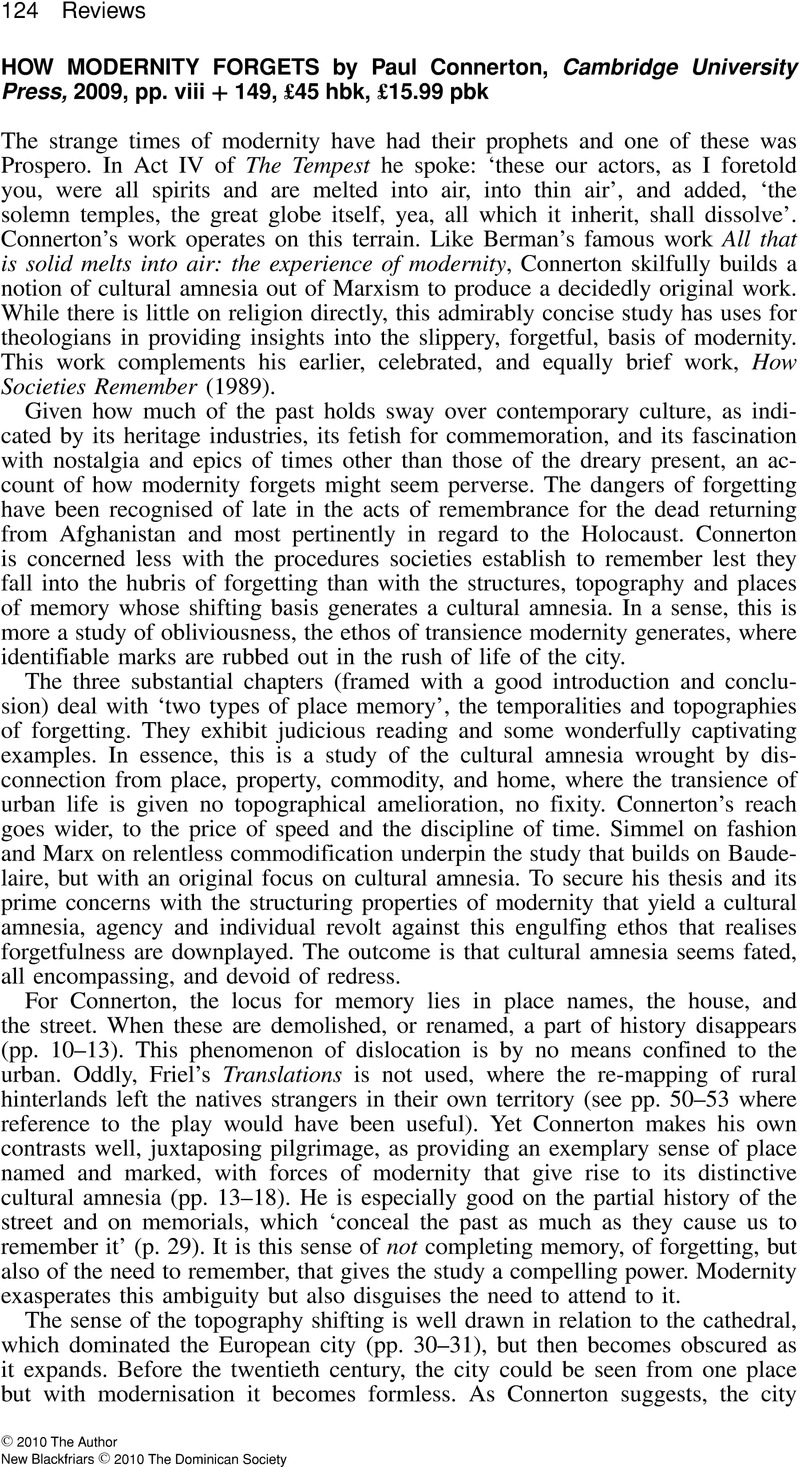No CrossRef data available.
Article contents
How Modernity Forgets by Paul Connerton, Cambridge University Press, 2009, pp. viii + 149, £45 hbk, £15.99 pbk
Review products
How Modernity Forgets by Paul Connerton, Cambridge University Press, 2009, pp. viii + 149, £45 hbk, £15.99 pbk
Published online by Cambridge University Press: 01 January 2024
Abstract
An abstract is not available for this content so a preview has been provided. Please use the Get access link above for information on how to access this content.

Information
- Type
- Reviews
- Information
- Copyright
- Copyright © 2010 The Author. New Blackfriars © 2010 The Dominican Society.

